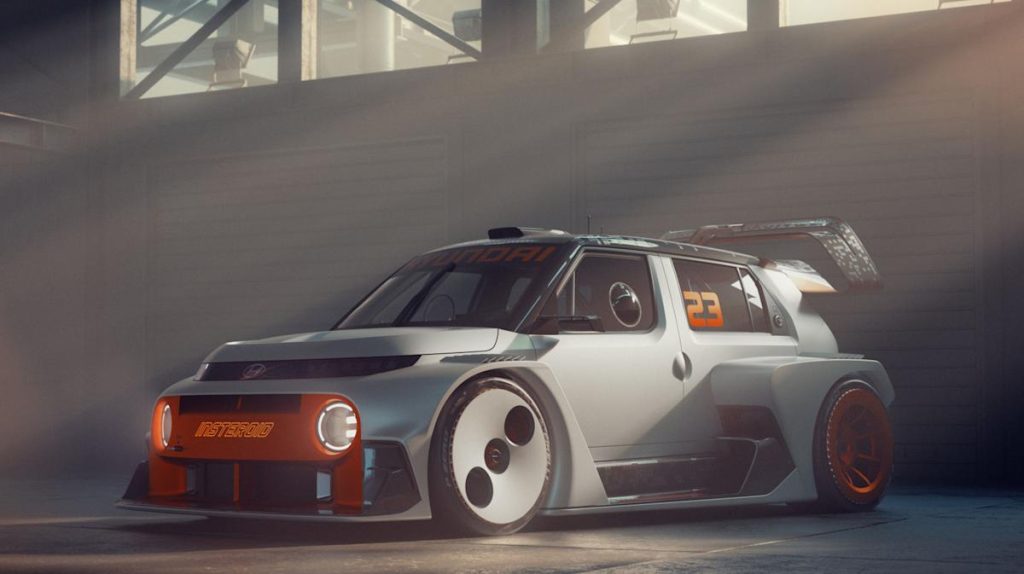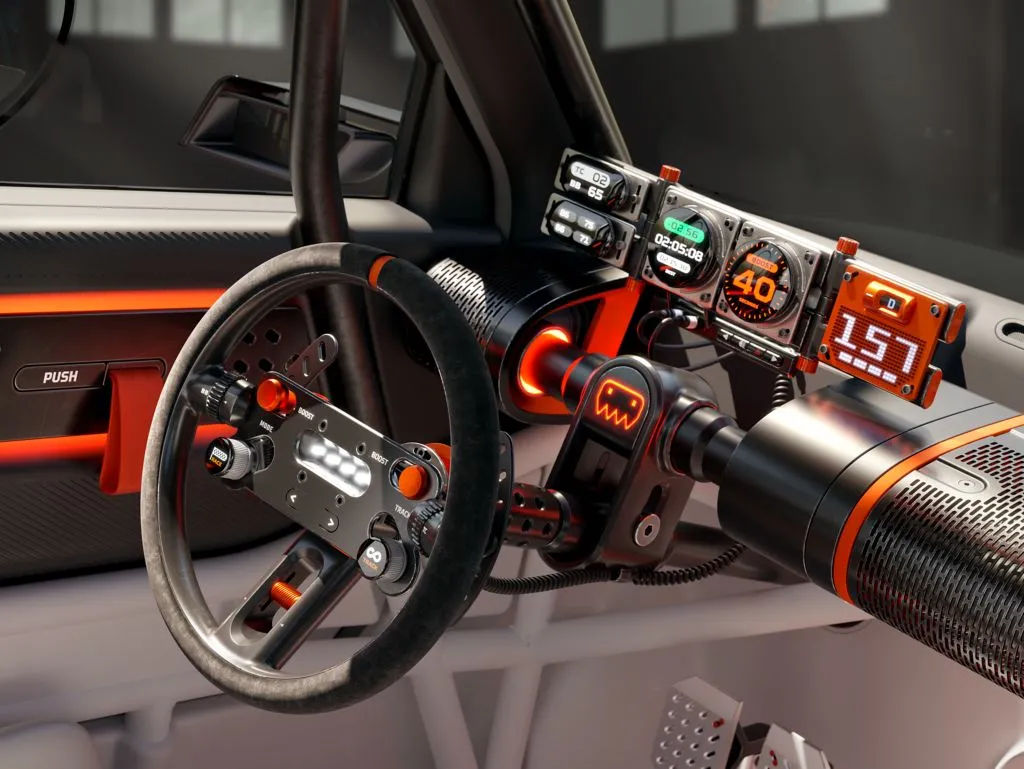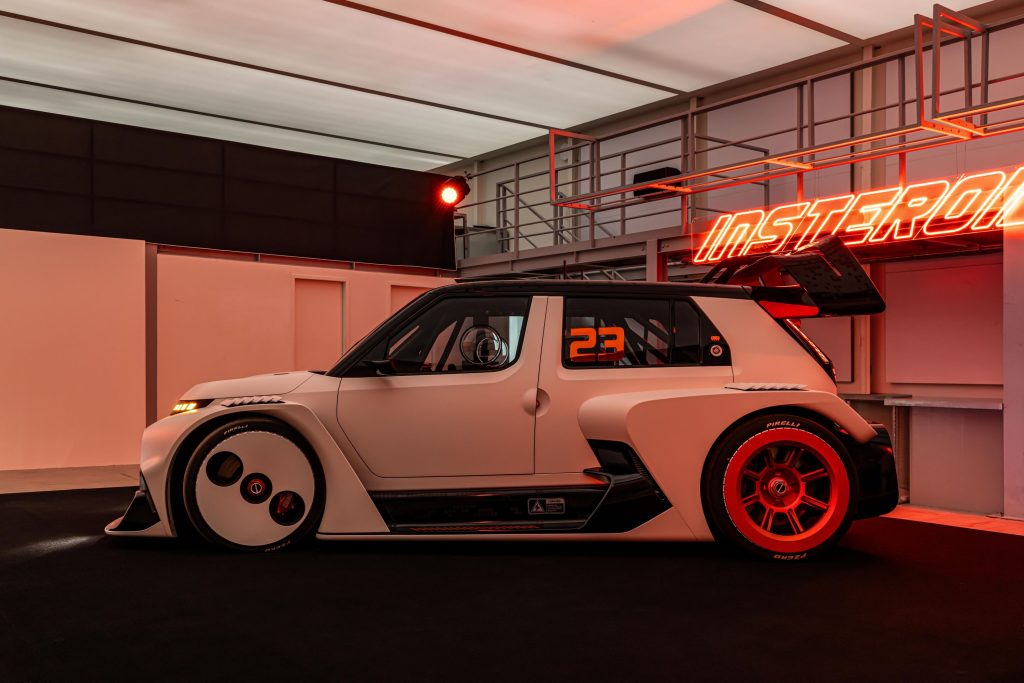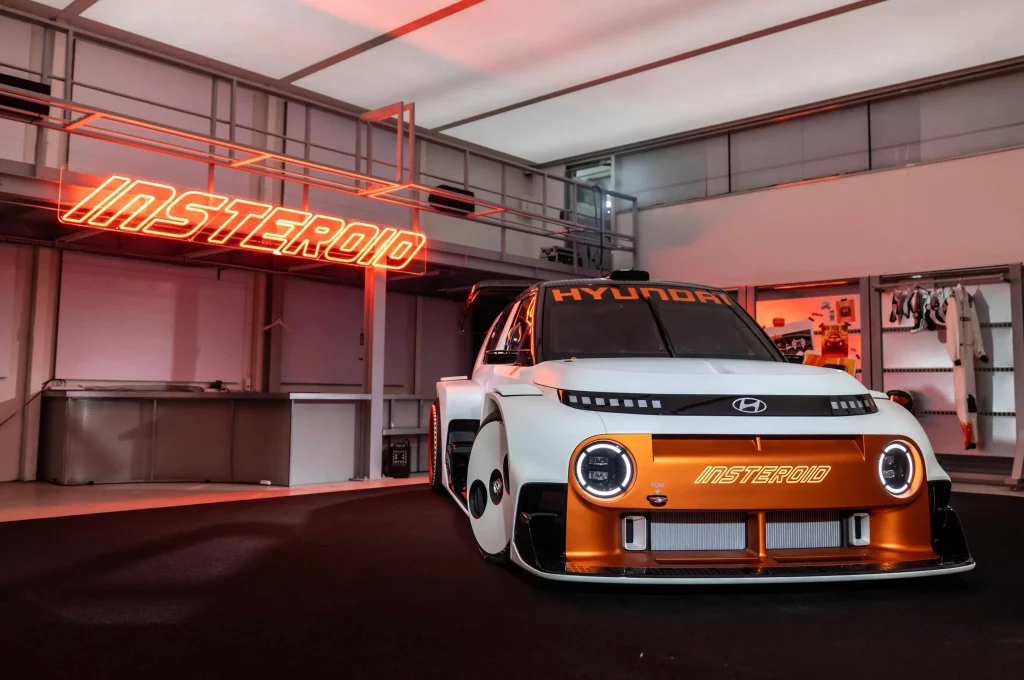The Hyundai Insteroid Race Car Concept isn’t just another EV design exercise; it’s what happens when automotive engineers binge-play racing games and then hit the drawing board. This amped-up transformation of the Inster EV platform delivers a rally-inspired package that straddles the line between digital fantasy and reality.
Design

Draped in Soft White paint with punchy orange accents, the Insteroid turns heads without trying too hard. Its pixel-patterned roof and rear wing look like they’ve been ripped straight from a vintage arcade cabinet, while the chunky air dam means business up front. The wheels tell their own story—practical aero covers shield the front pair while the rear set sports turbine designs that wouldn’t look out of place in a sci-fi racing flick. It’s a machine that knows how to make an entrance, for sure. You either love it, or hate it, but you can’t ignore it.
Interior

Step inside and you’ll find yourself surrounded by a cabin that splits the difference between competition-ready and gamer-approved. A full roll cage frames the space where deep bucket seats grab you tight. The hydraulic-style handbrake is practically asking to be pulled and drifted with, while the steering wheel comes loaded with Boost, Track, and Mode buttons that beg for a quick thumb-press. Despite its serious performance, the Insteroid keeps the party going with a Beat House audio system that ensures you won’t be listening to just tire noise.
Powertrain & Performance

Hyundai’s keeping the performance stats hidden for now, but whispers suggest the Insteroid will outmuscle the standard Inster EV by a considerable margin. Taking cues from the RN24 concept playbook, expectations point toward a system that could unleash around 650 BHP through all four wheels—though for now, that remains in the realm of educated speculation.
Showcase & Debut

The Insteroid will show us what it’s made of at the Seoul Mobility Show, where your reaction will help determine whether this digital-meets-physical concept makes the leap to limited production. Meanwhile, the more conventional Inster Cross waits in the wings for a 2026 debut, aimed at those who prefer their electric vehicles with a side of practicality rather than a main course of adrenaline.
With the Insteroid, Hyundai has proven it understands something fundamental about modern performance cars: in a world where digital and physical experiences increasingly overlap, the most memorable machines are those that speak both languages fluently.

